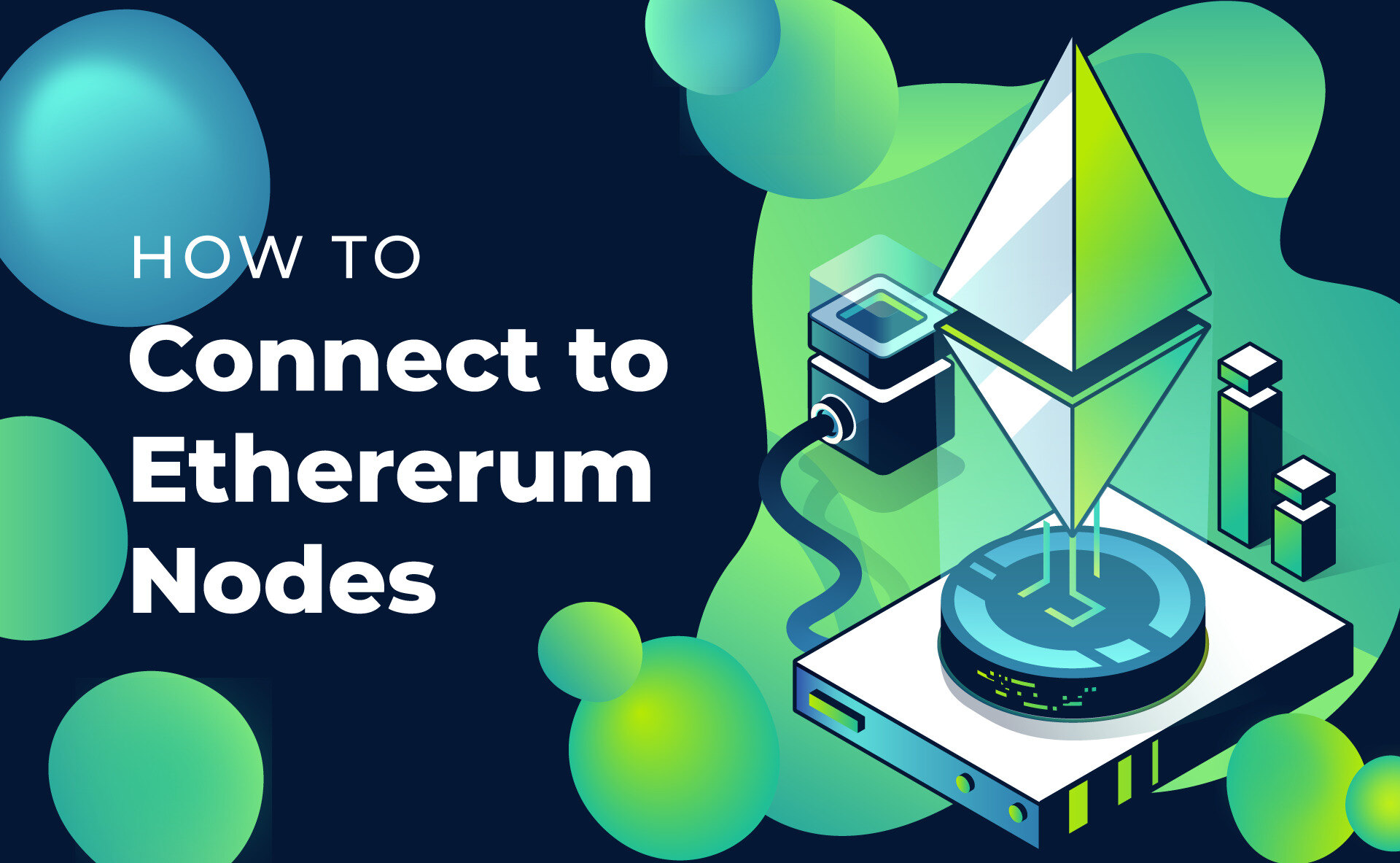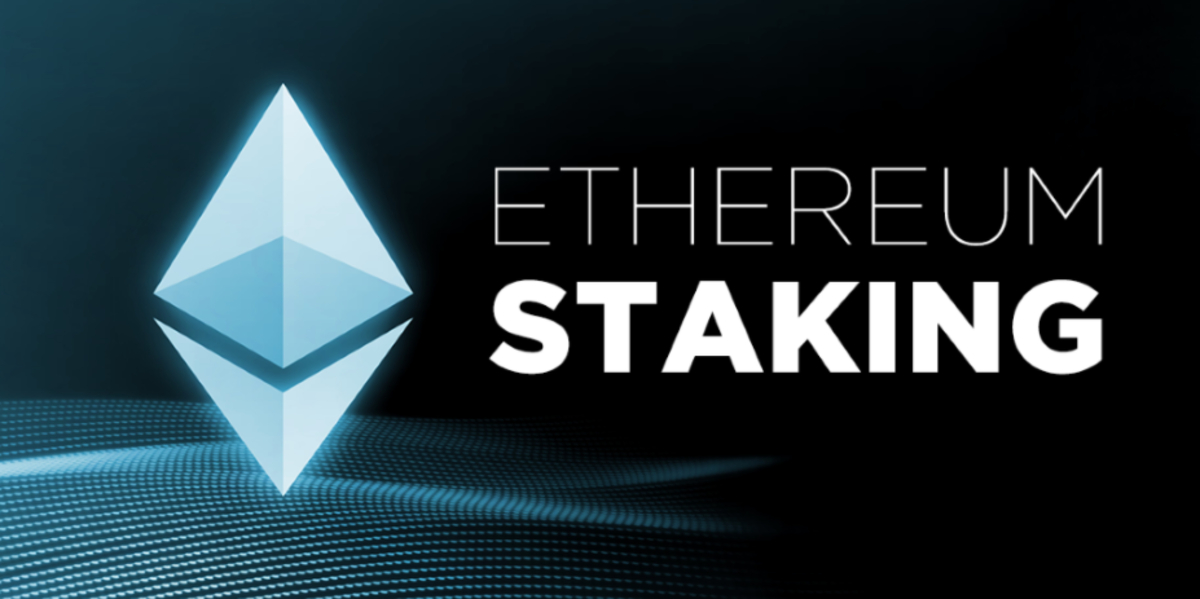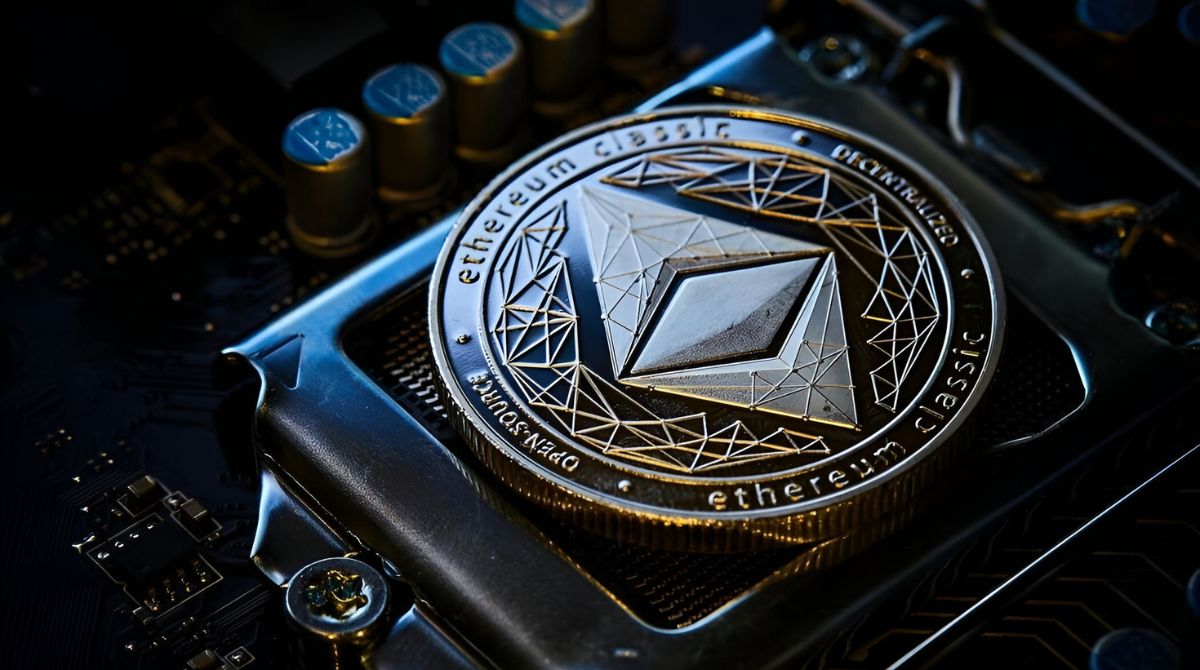Introduction
Welcome to the world of Ethereum nodes! If you are interested in becoming a part of the Ethereum network and contributing to its decentralization, setting up your own Ethereum node is a crucial step. By running a node, you can help verify transactions, validate smart contracts, and support the overall network security.
In this guide, we will take you through the step-by-step process of setting up an Ethereum node. Whether you are a developer, a crypto enthusiast, or someone who wants to actively participate in the Ethereum ecosystem, this guide will provide you with the knowledge and tools to get started.
Before we dive into the technical details, let’s briefly explain what an Ethereum node is. Think of it as a computer program that connects to the Ethereum network, allowing you to interact with the blockchain. Nodes play a vital role in maintaining the network’s integrity by storing a copy of the entire blockchain, validating transactions, and relaying information between different participants.
Setting up an Ethereum node can be an exciting and rewarding experience. By running your own node, you not only contribute to the decentralization and security of the Ethereum network but also gain a deeper understanding of how blockchain technology works.
Throughout this guide, we will assume that you have a basic understanding of blockchain technology and the Ethereum ecosystem. If you are new to Ethereum, we recommend taking some time to familiarize yourself with the fundamentals before proceeding.
Now that we have set the stage, let’s dive into the technical details and get started on setting up your very own Ethereum node. Strap in and get ready for an adventure in the world of Ethereum!
What is an Ethereum Node
Before we delve into the intricacies of setting up an Ethereum node, let’s first understand what exactly it is and why it plays a crucial role in the Ethereum network.
An Ethereum node is essentially a computer program that connects to the Ethereum blockchain, allowing users to interact with the network. It serves as a gateway, facilitating the transmission of information, verifying transactions, and maintaining the security and integrity of the network. Nodes play a vital role in the decentralized nature of blockchain technology, ensuring that no single entity controls the entire network.
There are different types of nodes in the Ethereum network, each serving a specific purpose. The two main types are:
- Full Nodes: These nodes store a complete copy of the Ethereum blockchain. They validate transactions, execute smart contracts, and keep track of the entire network state. Full nodes are crucial for decentralization as they contribute to the network’s security by independently verifying transactions and blocks.
- Light Clients: These nodes do not store the entire blockchain but rely on other full nodes to provide them with the necessary information. Light clients are useful for mobile devices or devices with limited storage capacity, as they require fewer resources to operate.
By running an Ethereum node, you become an integral part of the network. You contribute to the decentralization and security of Ethereum by verifying transactions, validating smart contracts, and relaying information to other nodes in the network.
Furthermore, running a node gives you the ability to have direct control and access to the Ethereum blockchain. You can interact with the network, create and deploy smart contracts, and even participate in the consensus mechanism by mining or staking, depending on the Ethereum version.
While setting up and running an Ethereum node may require some technical knowledge and resources, it offers numerous benefits. By running your own node, you can ensure the security of your transactions, have a better understanding of the network’s operations, and actively contribute to the development and advancement of the Ethereum ecosystem.
Now that we have a clear understanding of what an Ethereum node is and its significance, let’s move on to the next section where we will discuss the prerequisites and requirements for setting up your own Ethereum node.
Prerequisites
Before you embark on the journey of setting up an Ethereum node, there are a few prerequisites you need to consider. These prerequisites will ensure that you have the necessary tools and knowledge to successfully configure and run your node. Let’s dive into the requirements:
- Hardware Requirements: Running an Ethereum node requires a computer with sufficient resources. While the exact hardware specifications may vary depending on the type of node and network configuration you choose, here are the general recommendations:
- Processor (CPU): A multi-core processor is recommended for optimal performance.
- Memory (RAM): Ethereum nodes require a minimum of 4GB RAM, but having more RAM will improve performance, especially for full nodes that store the entire blockchain.
- Storage: You will need significant storage capacity to store the Ethereum blockchain. As of [insert date], the Ethereum blockchain size is over [insert size], and it continues to grow. Ensure you have enough disk space available.
- Internet Connection: A stable and reliable internet connection is essential for syncing with the Ethereum network and relaying information to other nodes.
- Operating System: Ethereum nodes are compatible with various operating systems, including Windows, macOS, and Linux. Choose an operating system that you are comfortable with and meets the system requirements of the node software you plan to use.
- Ethereum Node Software: There are different Ethereum node software options available, including Geth, Parity, Besu, and Nethermind. For this guide, we will focus on Geth, which is one of the most popular and widely used Ethereum node clients.
- Knowledge of Command Line Interface (CLI): Setting up and managing an Ethereum node involves interacting with command-line tools. Familiarize yourself with basic commands and the command-line interface of your chosen operating system.
- Patience and Persistence: Running an Ethereum node can be a time-consuming process, especially when syncing with the Ethereum blockchain for the first time. Patience and persistence are key qualities as the initial synchronization can take several hours or even days, depending on your hardware and internet connection.
By ensuring that you have the necessary hardware, software, and knowledge, you are well-prepared to proceed with the next steps of setting up your Ethereum node. In the following sections, we will guide you through the installation, configuration, and syncing process, so you can become an integral part of the Ethereum network.
Step 1: Install Geth
To set up an Ethereum node, we will begin by installing Geth, which is short for Go Ethereum. Geth is one of the most popular Ethereum client implementations, written in the Go programming language.
Here’s a step-by-step guide to installing Geth:
- Download Geth: Visit the official Geth website (https://geth.ethereum.org/downloads/) and download the appropriate version of Geth for your operating system. Geth is available for Windows, macOS, and Linux.
- Install Geth: Once the download is complete, run the installer or follow the installation instructions provided for your specific operating system. The installation process is straightforward and typically involves clicking through a few prompts.
- Verify the Installation: After the installation is complete, open the command-line interface (CLI) on your computer and run the following command:
geth version. This command will display the Geth version installed on your system. If the command returns the version number, it means Geth has been installed successfully.
Congratulations! You have successfully installed Geth on your computer. Now, let’s move on to the next step, where we will configure the network ports for your Ethereum node.
Step 2: Configure Network Ports
Once you have installed Geth, the next step is to configure the network ports for your Ethereum node. Configuring the network ports is important to ensure that your node can communicate with other nodes in the Ethereum network and establish connections.
Here’s a guide to help you configure the network ports for your Ethereum node:
- Identify the Firewall Settings: If you have a firewall enabled on your computer or network, you need to identify the settings that control incoming and outgoing connections. This step may vary depending on your operating system and firewall software.
- Allow Inbound Connections: Open the firewall settings and ensure that incoming connections on the Ethereum network ports are allowed. By default, Geth uses two main ports:
- TCP Port 30303: This is the default port for Ethereum Peer-to-Peer (P2P) communication. Make sure this port is allowed for incoming connections.
- UDP Port 30303: Geth also uses UDP for certain types of network communication. Allow incoming connections on this port as well.
- Configure Port Forwarding: If you are behind a router or a network with Network Address Translation (NAT), you may need to configure port forwarding to allow inbound connections. Refer to the documentation or user manual of your router or network device for instructions on port forwarding.
- Test Connectivity: After configuring the network ports and port forwarding, it’s essential to test the connectivity of your Ethereum node. You can use online tools like “CanYouSeeMe.org” or “PortCheckTool.com” to verify if the configured ports are open and accessible from the internet.
By configuring the network ports correctly, you ensure that your Ethereum node can establish connections with other nodes in the network and participate in the Ethereum ecosystem. Now that you have set up the network ports, let’s move on to the next step, where we will discuss syncing your node with the Ethereum network.
Step 3: Sync with the Ethereum Network
After configuring the network ports, the next step in setting up your Ethereum node is to sync it with the Ethereum network. Syncing involves downloading and verifying the entire blockchain, ensuring your node is up to date with the latest transactions and smart contract data.
Follow these steps to sync your Ethereum node:
- Open a Terminal or Command Prompt: Launch the command-line interface (CLI) on your computer. On Windows, you can use the Command Prompt, while on macOS and Linux, you can use the Terminal.
- Start Geth in Sync Mode: To sync your Ethereum node, you need to run the Geth command with the appropriate flags and options. The basic command to start syncing your node is as follows:
geth --syncmode [mode]Replace
[mode]with any of the following options:- “full”: This mode downloads and verifies the full Ethereum blockchain, including all past transactions, smart contracts, and historical data. It requires significant storage space and time to complete the initial sync.
- “fast”: This mode performs a faster sync by downloading a subset of the blockchain data. It skips some historical data but still provides a complete state of the network. It is a good option if you have limited storage space or want a quicker sync process.
Choose the sync mode that suits your needs and append it to the Geth command.
- Wait for Syncing to Complete: Once you start Geth in sync mode, it will begin downloading and verifying the blockchain data. The time it takes to complete the sync process depends on your internet connection, hardware, and selected sync mode. Be patient, as the initial synchronization can take several hours or even days.
- Monitor Syncing Progress: To monitor the syncing progress, Geth provides a progress indicator that shows the block number and the estimated time remaining for the sync to complete. Keep an eye on this information to track the progress of your node.
Syncing your Ethereum node is a crucial step in ensuring it has the latest blockchain data. Once the sync process is complete, your node will be up to date and ready to participate in the Ethereum network. In the next step, we will explore how to set up a local Ethereum wallet, giving you the ability to securely store and manage your Ether and interact with the Ethereum network.
Step 4: Set Up a Local Ethereum Wallet
After syncing your Ethereum node with the network, the next step is to set up a local Ethereum wallet. An Ethereum wallet allows you to securely store and manage your Ether (ETH) tokens as well as interact with the Ethereum network and its decentralized applications (DApps).
Here’s a guide on how to set up a local Ethereum wallet:
- Choose a Wallet Software: There are several wallet options available for Ethereum, including desktop wallets, web-based wallets, hardware wallets, and mobile wallets. For this guide, we will focus on setting up a desktop wallet using the popular software called MetaMask.
- Install MetaMask: Visit the MetaMask website (https://metamask.io/) and follow the instructions to download and install the MetaMask extension for your preferred web browser (e.g., Chrome or Firefox).
- Create a New Wallet: Once MetaMask is installed, open your browser and click on the MetaMask extension icon. Follow the on-screen prompts to create a new wallet. Make sure to set a strong and unique password for your wallet.
- Backup Your Wallet: After creating your wallet, MetaMask will provide you with a set of seed words (usually 12 or 24 words) that serve as a backup for your wallet. Write down these seed words and store them in a safe and secure location. They are crucial for recovering access to your wallet in case of loss or device failure.
- Connect MetaMask to Your Ethereum Node: In order to connect your MetaMask wallet to your local Ethereum node, open MetaMask and click on the network selection dropdown. Choose “Custom RPC” and enter the URL of your Ethereum node (e.g., http://localhost:8545 for a local node). Save the settings, and MetaMask will now connect to your local node.
- Import or Send Ether: With your MetaMask wallet set up and connected to your Ethereum node, you can now import existing Ether from other wallets or purchase Ether and send it to your MetaMask address. This will enable you to interact with decentralized applications and participate in the Ethereum ecosystem.
Setting up a local Ethereum wallet using MetaMask gives you full control over your Ether, allows you to securely manage your funds, and provides seamless integration with various Ethereum applications and services.
Now that you have a local Ethereum wallet up and running, you are ready to connect to the Ethereum network and actively participate as a node operator. In the next step, we will discuss how to connect your Ethereum node to the network.
Step 5: Connect to the Ethereum Network
Now that you have set up your Ethereum node and local wallet, the next step is to connect your node to the Ethereum network. Connecting your node will enable it to communicate with other nodes, exchange information, and participate in the decentralized nature of the Ethereum network. Here’s how you can connect your Ethereum node:
- Open a Terminal or Command Prompt: Launch the command-line interface (CLI) on your computer.
- Run Geth with Required Parameters: To connect your Ethereum node to the network, you need to run Geth with specific parameters. Here’s the command to use:
geth --syncmode [mode] --rpc --rpcapi [apis]Replace
[mode]with the sync mode you chose during the syncing process (e.g., “full” or “fast”).Replace
[apis]with the desired APIs you want to enable for your node. For example, if you want to enable the Ethereum JSON-RPC API and the Websockets API, use the following command:geth --syncmode [mode] --rpc --rpcapi eth,websocketsThis command will start Geth with the specified sync mode, enable the RPC (Remote Procedure Call) server, and activate the selected APIs.
- Wait for Node Initialization: After running the command, Geth will initialize your node and establish connections with other nodes in the Ethereum network. It may take a few moments for the node to sync with other peers and fully connect to the network.
- Verify Node Connectivity: To ensure that your Ethereum node is correctly connected to the network, you can use the Geth console. Open a new Terminal or Command Prompt window and run the following command:
geth attachThis will open the Geth console, where you can interact with your Ethereum node. In the console, use the
net.peerCountcommand to check the number of connected peers. If the command returns a value greater than zero, it means your node is successfully connected.
By connecting your Ethereum node to the network, you unlock its full potential and become an active participant in the Ethereum ecosystem. Your node will contribute to the decentralization, security, and consensus of the network, as well as allow you to interact with smart contracts and DApps.
In the next step, we will discuss how to monitor and maintain your Ethereum node to ensure its smooth operation and reliability.
Step 6: Monitor and Maintain Your Node
Once your Ethereum node is up and running, it’s important to monitor and maintain its performance to ensure its smooth operation and reliability. Monitoring and maintaining your node will help you identify and address any issues promptly, optimize performance, and contribute to the overall health of the Ethereum network. Here are some key aspects to consider:
- Monitor Resource Usage: Keep an eye on your node’s resource usage, including CPU, memory, and disk space. High resource consumption can impact node performance and may require adjusting system resources or optimizing your Geth configuration.
- Stay Updated: Regularly check for updates to the Geth software and other relevant Ethereum components. Updates often include bug fixes, security enhancements, and performance optimizations. Keeping your software up to date ensures that your node stays in sync with the network and benefits from the latest improvements.
- Backup Your Node’s Data: Back up your node’s data regularly, especially the keystore directory where your account data and private keys are stored. Creating backups protects your account information and allows for easy recovery in case of data loss or device failure.
- Monitor Network Connectivity: Ensure that your node maintains a stable and reliable internet connection at all times. Unstable or intermittent connectivity can cause issues with syncing, block propagation, and communication with other nodes. Consider using network monitoring tools to keep an eye on your node’s connectivity status.
- Stay Informed: Stay updated on the latest news and developments in the Ethereum community. Follow official Ethereum channels, subscribe to relevant forums and social media groups, and participate in discussions. Staying informed allows you to stay ahead of any potential network upgrades, security vulnerabilities, or changes that may impact your node’s operation.
- Continuously Assess Security: Regularly assess the security of your node and take appropriate measures to protect it from potential cyber threats. Use strong passwords, enable firewall protections, keep your Geth software up to date, and be cautious of phishing attempts or suspicious links. Security should always be a top priority to safeguard your funds and maintain the integrity of your node.
By actively monitoring and maintaining your Ethereum node, you contribute to the resilience and overall health of the Ethereum network. Your node becomes a reliable and trusted participant, supporting the decentralized nature and security of the ecosystem.
With this final step, you have successfully set up, connected, and now have the knowledge to maintain your Ethereum node. Congratulations! You are now part of the Ethereum network, actively contributing to its growth and security.
Remember, running an Ethereum node is an ongoing commitment. Stay engaged, keep learning, and continue to explore the exciting possibilities that the Ethereum ecosystem offers.
Conclusion
Congratulations on completing the process of setting up your own Ethereum node! By following the steps outlined in this guide, you have gained the knowledge and skills to actively participate in the Ethereum network and contribute to its decentralization.
Throughout this guide, we have covered the essential steps, including installing Geth, configuring network ports, syncing with the Ethereum network, setting up a local Ethereum wallet, connecting to the Ethereum network, and monitoring and maintaining your node. Each step was designed to ensure that your node is operational, secure, and actively engaged in the Ethereum ecosystem.
By running an Ethereum node, you become an integral part of the network infrastructure, contributing to the validation and security of transactions, execution of smart contracts, and overall decentralization of the Ethereum network. Running a node also enables you to have direct control over your transactions and provides opportunities to engage with decentralized applications and services.
Remember that setting up an Ethereum node is just the first step in your journey. It’s essential to stay updated with the latest developments in Ethereum, remain vigilant about security, and be active in the Ethereum community. Continuously expanding your knowledge and exploring new possibilities will allow you to maximize the benefits of running an Ethereum node.
Thank you for joining the ranks of Ethereum node operators and being part of the global Ethereum ecosystem. Your contribution helps to shape the future of decentralized finance, smart contracts, and blockchain technology as a whole.
Now that you have the tools and knowledge, feel free to explore, develop, and make the most of your newly set-up Ethereum node. Happy exploring!

























